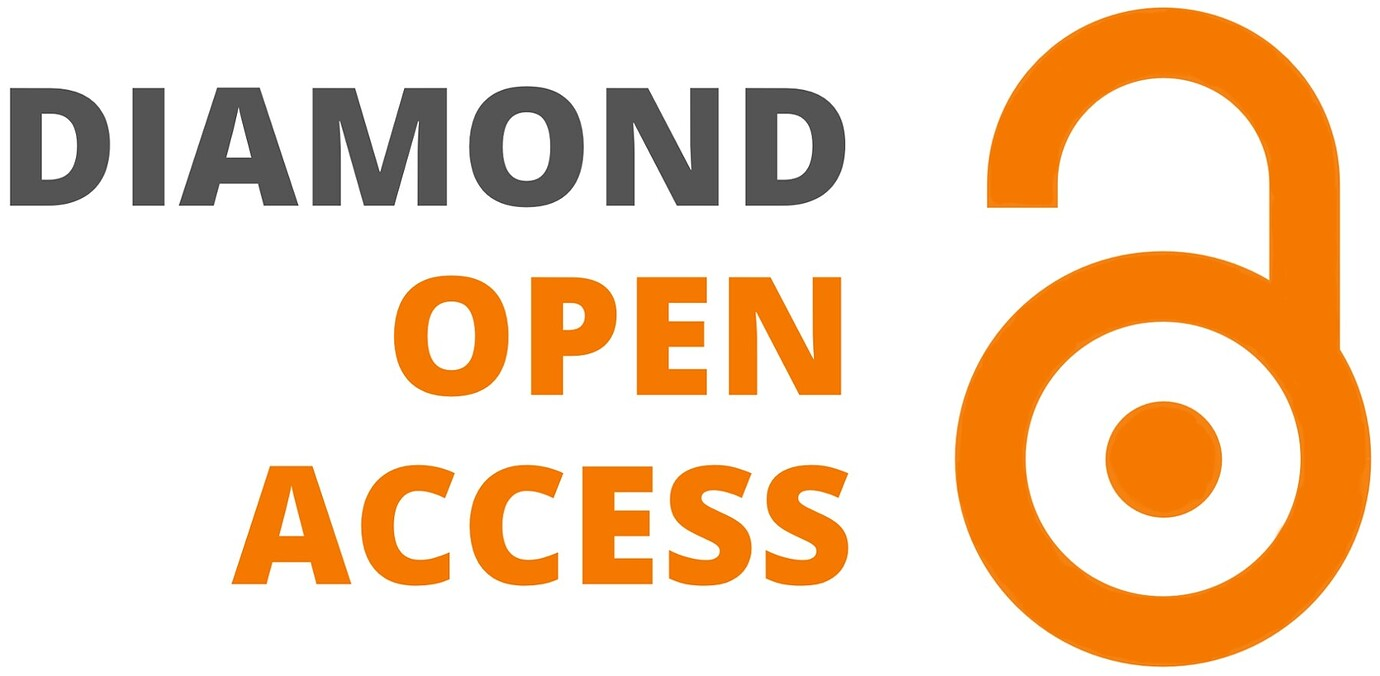Intervention explicite et graduée ciblant le subitizing conceptuel, le dénombrement et le surcomptage au moyen du logiciel SUBéCAL chez des enfants présentant des difficultés en mathématiques.
DOI :
https://doi.org/10.61989/z4tgvt40Mots-clés :
Trouble des Apprentissages en Mathématiques, intervention, orthophonie, dénombrement, calcul, subitizingRésumé
Contexte : De nombreux enfants présentant un Trouble des Apprentissages en Mathématiques (TAM) rencontrent des difficultés en subitizing conceptuel et en dénombrement. Ces deux compétences prédisent les habiletés mathématiques futures.
Objectif : L’objectif de l’étude était d’évaluer l’effet d’une intervention explicite, intensive et graduée ciblant le subitizing conceptuel, le dénombrement et le surcomptage chez des enfants à risque de ou avec TAM sur les compétences entraînées et, par transfert, sur les performances plus complexes en dénombrement et en arithmétique.
Méthodologie : Trois participants à risque de ou avec TAM ont été recrutés. Deux prétests ont été réalisés : l’un deux semaines avant et l’autre une semaine avant l’intervention. L’intervention a duré six semaines à raison de trois séances hebdomadaires. Certaines séances étaient réalisées au cabinet et d’autres en visioconférence. L’intervention était constituée de trois phases successives de deux semaines. Lors des deux premières semaines, les enfants s’entraînaient au dénombrement, les deux suivantes au subitizing puis les deux dernières au surcomptage. Le matériel utilisé était le logiciel SUBéCAL (Lafay & Helloin, 2019). Enfin, deux post-tests ont été réalisés : l’un immédiatement à la suite de l’intervention et l’autre environ un mois après.
Résultats : Les résultats ont montré que les trois participants ont progressé pour les mesures d’apprentissages (subitizing, dénombrement, surcomptage) et pour la mesure de transfert de dénombrement (mais pas pour la mesure de transfert en arithmétique). En outre, un maintien des performances est observé un mois après.
Conclusion : L’étude a montré l’efficacité d’une intervention explicite, graduée, intensive et ciblée sur le subitizing conceptuel, le dénombrement et le surcomptage. Cette intervention peut être reproduite dans le milieu clinique en proposant une ou deux séances au cabinet et une ou deux séances en visioconférence par semaine. Toutefois, cette étude doit être reproduite plusieurs fois pour être reconnue comme une pratique probante.
Références
American Psychiatric Association. (2015) DSM-5—Manuel diagnostique et statistique des troubles mentaux (5e éd.). Elsevier Masson.
Andersson, U., & Östergren, R. (2012). Number magnitude processing and basic cognitive functions in children with mathematical learning disabilities. Learning and Individual Differences, 22(6), 701‑714. https://doi.org/10.1016/j.lindif.2012.05.004
Ashkenazi, S., Mark-Zigdon, N., & Henik, A. (2013). Do subitizing deficits in developmental dyscalculia involve pattern recognition weakness? Developmental Science, 16(1), 35‑46. https://doi.org/10.1111/j.1467-7687.2012.01190.x
Baccaglini-Frank, A., & Maracci, M. (2015). Multi-touch technology and preschoolers’ development of number-Sense. Digital Experiences in Mathematics Education, 1, 7‑27. https://doi.org/10.1007/s40751-015-0002-4
Barendregt, W., Lindström, B., Rietz-Lepännen, E., Holgersson, I., & Ottosson, T. (2012). Development and evaluation of Fingu: A mathematics iPad game using multi-touch interaction. IDC’12: Proceedings of the 11th International Conference on Integration Design and Children (p.204-207). https://doi.org/10.1145/2307096.2307126
Bolsius, C., et Gros, P. (2010). Du comptage au calcul. In J.-L. Durepaire & M. Mégard (dir.), Le nombre au cycle 2 (p. 35-50). SCEREN.
Butterworth, B. (2005). Developmental Dyscalculia. In J. I. D. Campbell (dir.), Handbook of mathematical cognition (p. 455‑467). Psychology press.
Cattini, J., & Lafay, A. (2021). L’efficacité des interventions en mathématiques chez les enfants ayant un trouble des apprentissages en mathématiques ou à risque. Glossa, 131, 87-120.
Clements, D. H. (1999). Subitizing: What is it? Why teach it? Teaching Children Mathematics, 5(7), 400‑405. https://doi.org/10.5951/TCM.5.7.0400
Dehaene, S. (2010). La bosse des maths : Quinze ans après. Odile Jacob.
Desoete, A., & Grégoire, J. (2006). Numerical competence in young children and in children with mathematics learning disabilities. Learning and Individual Differences, 16(4), 351‑367. https://doi.org/10.1016/j.lindif.2006.12.006
Ebbels, S. H. (2017). Intervention research: Appraising study designs, interpreting findings and creating research in clinical practice. International Journal of Speech-Language Pathology, 19(3), 218‑231. https://doi.org/10.1080/17549507.2016.1276215
Fayol, M. (2008). L’acquisition de l’arithmétique élémentaire. Médecine/Sciences, 24(1), 87‑90. https://doi.org/10.1051/medsci/200824187
Fischer, B., Gebhardt, C., & Hartnegg, K. (2008a). Subitizing and visual counting in children with problems in acquiring basic arithmetic skills. Optometry & Vision Development, 39(1), 24‑29. https://www.covd.org/page/OVD_391
Fischer, B., Köngeter, A., & Hartnegg, K. (2008b). Effects of daily practice on subitizing, visual counting, and basic arithmetic skills. Optometry & Vision Development, 39(1), 30‑34. https://www.covd.org/page/OVD_391
Friso-van den Bos, I., Kroesbergen, E. H., & Van Luit, J. E. H. (2018). Counting and number line trainings in kindergarten: Effects on arithmetic performance and number sense. Frontiers in Psychology, 9(975). https://doi.org/10.3389/fpsyg.2018.00975
Geary, D. C., Bow-Thomas, C. C., & Yao, Y. (1992). Counting knowledge and skill in cognitive addition: A comparison of normal and mathematically disabled children. Journal of Experimental Child Psychology, 54(3), 372‑391. https://doi.org/10.1016/0022-0965(92)90026-3
Helloin, M.-C., & Lafay, A. (2021). Examath 5-8, batterie informatisée d’examen des habiletés mathématiques pour les enfants de 5 à 8 ans. HappyNeuron.
Hinton, V. M., Flores, M. M., Schweck, K., & Burton, M. E. (2016). The effects of a supplemental explicit counting intervention for preschool children. Preventing School Failure: Alternative Education for Children and Youth, 60(3), 183‑193. https://doi.org/10.1080/1045988X.2015.1065400
Horner, R. H., Carr, E. G., Halle, J., McGee, G., Odom, S., & Wolery, M. (2005). The use of single-subject research to identify evidence-based practice in special education. Exceptional Children, 71(2), 165‑179. https://doi.org/10.1177/001440290507100203
Krajcsi, A., Szabó, E., & Mórocz, I. Á. (2013). Subitizing is sensitive to the arrangement of objects. Experimental Psychology, 60(4), 227‑234. https://doi.org/10.1027/1618-3169/a000191
Lafay, A., & Helloin, M.-C. (2019). SUBéCAL, un logiciel d’intervention basé sur le subitizing et le dénombrement pour le développement du calcul. HappyNeuron.
Lafay, A., Macoir, J., & St-Pierre, M.-C. (2018). Impairment of arabic- and spoken-number processing in children with mathematical learning disability. Journal of Numerical Cognition, 3(3), 620‑641. https://doi.org/10.5964/jnc.v3i3.123
Lafay, A., St-Pierre, M.-C., & Macoir, J. (2019). Impairment of non-symbolic number processing in children with mathematical learning disability. Journal of Numerical Cognition, 5(1), 86‑104. https://doi.org/10.5964/jnc.v5i1.177
Lafay, A., St-Pierre, M.-C., & Macoir, J. (2013). Développement des systèmes numériques non symboliques et prédicteurs de réussite mathématique. Glossa, 112, 1‑17.
Landerl, K., Bevan, A., & Butterworth, B. (2004). Developmental dyscalculia and basic numerical capacities: A study of 8-9-year-old students. Cognition, 93(2), 99‑125. https://doi.org/10.1016/j.cognition.2003.11.004
Lecointre, A., Lépine, R., Camos, V. (2005). Développement et troubles des processus de quantification. In M.-P. Noël (dir.), La dyscalculie trouble du développement numérique de l’enfant (p. 41-75). Solal
Mandler, G., & Shebo, B. J. (1982). Subitizing: An analysis of its component processes. Journal of Experimental Psychology: General, 111(1), 1‑22. https://doi.org/10.1037/0096-3445.111.1.1
Moeller, K., Neuburger, S., Kaufmann, L., Landerl, K., & Nuerk, H.-C. (2009). Basic number processing deficits in developmental dyscalculia: Evidence from eye tracking. Cognitive Development, 24(4), 371‑386. https://doi.org/10.1016/j.cogdev.2009.09.007
Nguyen, T., Watts, T. W., Duncan, G. J., Clements, D. H., Sarama, J. S., Wolfe, C., & Spitler, M. E. (2016). Which preschool mathematics competencies are most predictive of fifth grade achievement? Early Childhood Research Quarterly, 36, 550‑560. https://doi.org/10.1016/j.ecresq.2016.02.003
Noël, M.-P., & Karagiannakis, G. (2020). Les bases d’une intervention cognitive pour les problèmes d’apprentissage en mathématiques et les dyscalculies. In M.-P. Noël & G. Karagiannakis (dir.), Dyscalculie et difficultés d’apprentissage en mathématiques (p. 11-48). De Boeck Supérieur.
Obersteiner, A., Reiss, K., & Ufer, S. (2013). How training on exact or approximate mental representations of number can enhance first-grade students’ basic number processing and arithmetic skills. Learning and Instruction, 23, 125‑135. https://doi.org/10.1016/j.learninstruc.2012.08.004
Özdem, Ş., & Olkun, S. (2019). Improving mathematics achievement via conceptual subitizing skill training. International Journal of Mathematical Education in Science and Technology, 52(4), 565‑579. https://doi.org/10.1080/0020739X.2019.1694710
Penner-Wilger, M., Fast, L., LeFevre, J.-A., Smith-Chant, B. L., Skwarchuck, S.-L., Kamawar, D., & Bisanz, J. (2007). The foundations of numeracy: Subitizing, finger gnosia, and fine motor ability. Proceedings of the Annual Meeting of the Cognitive Science Society, 29. https://escholarship.org/uc/item/8vb45554
Praet, M., & Desoete, A. (2014). Enhancing young children’s arithmetic skills through non-intensive, computerised kindergarten interventions: A randomised controlled study. Teaching and Teacher Education, 39, 56‑65. https://doi.org/10.1016/j.tate.2013.12.003
Schleifer, P., & Landerl, K. (2011). Subitizing and counting in typical and atypical development. Developmental Science, 14(2), 280‑291. https://doi.org/10.1111/j.1467-7687.2010.00976.x
Starkey, P., & Cooper Jr, R. G. (1995). The development of subitizing in young children. British Journal of Developmental Psychology, 13(4), 399‑420. https://doi.org/10.1111/j.2044-835X.1995.tb00688.x
Starkey, P., & Cooper Jr, R. G. (1980). Perception of numbers by human infants. Science, 210(4473), 1033‑1035. https://doi.org/10.1126/science.7434014
Van de Rijt, B. A. M., & Van Luit, J. E. H. (1998). Effectiveness of the Additional Early Mathematics program for teaching children early mathematics. Instructional Science, 26(5), 337‑358. https://doi.org/10.1023/A:1003180411209
Wästerlid, C. A. (2020). Conceptual subitizing and preschool class children’s learning of the Part-whole relations of number. Problems of Education in the 21st Century, 78(6), 1038‑1054. https://dx.doi.org/10.33225/pec/20.78.1038
Wilson, A. J., Revkin, S. K., Cohen, D., Cohen, L., & Dehaene, S. (2006). An open trial assessment of « The Number Race », an adaptive computer game for remediation of dyscalculia. Behavioral and Brain Functions, 2, 20. https://doi.org/10.1186/1744-9081-2-20
Wynn, K. (1990). Children’s understanding of counting. Cognition, 36(2), 155‑193. https://doi.org/10.1016/0010-0277(90)90003-3
Téléchargements
Publiée
Licence
(c) Copyright Margaux Bazire, Marie-Christel Helloin, Anne Lafay 2023

Ce travail est disponible sous la licence Creative Commons Attribution 4.0 International .




